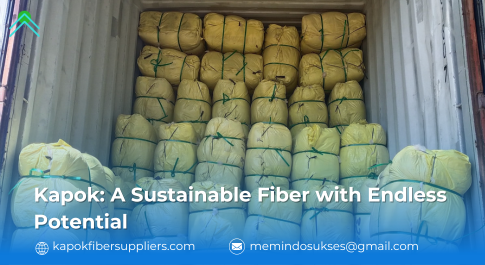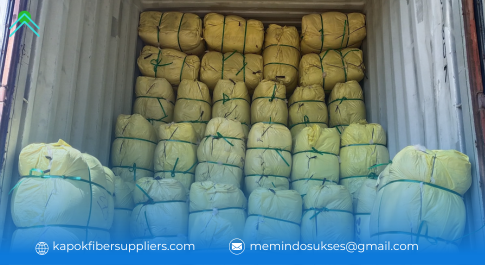
Kapok: A Sustainable Fiber with Endless Potential
As the world increasingly turns to eco-friendly solutions, the importance of natural fibers cannot be overstated. Among these, one extraordinary material has quietly been revolutionizing industries: kapok. This natural fiber, derived from the seed pods of the kapok tree (Ceiba pentandra), is making waves due to its sustainability, versatility, and minimal environmental impact. But what exactly makes kapok so special, and why should we be paying more attention to it? Let’s dive into the many wonders of this remarkable fiber.
The Kapok Tree: A Towering Symbol of Nature’s Ingenuity
Native to tropical rainforests across Central and South America, Africa, and Southeast Asia, the kapok tree is a giant in both size and ecological significance. These trees can reach up to 70 meters (230 feet) tall, with a massive canopy that provides shelter to a diverse range of species. The kapok tree is not only a towering presence in the forest but also a vital component in maintaining the health of its ecosystem.
What truly sets the kapok tree apart, however, is its incredible seed pods, which contain the fiber that has become famous for its diverse applications. The kapok tree’s pods are filled with light, silky fibers that have been used by indigenous people for centuries, from filling mattresses and pillows to crafting flotation devices.
The Exceptional Properties of Kapok Fiber
Kapok fiber stands out for its unique combination of attributes. One of the most remarkable features of kapok is its extreme lightness. The fiber is so buoyant that it is often used in life jackets and other flotation devices. This property makes it a safer, natural alternative to synthetic materials, which can be harmful to both humans and the environment.
In addition to its buoyancy, kapok is resistant to moisture and mold, making it an ideal choice for bedding materials. It is also hypoallergenic, providing a gentle and comfortable option for those with sensitive skin or allergies. Kapok’s fibers are naturally flame-retardant, offering additional protection in a variety of applications.
Another key advantage of kapok fiber is its biodegradability. Unlike many synthetic materials that can linger in landfills for centuries, kapok decomposes naturally, returning to the earth and leaving behind no harmful residues. This makes it a truly eco-friendly material that aligns with the growing global demand for sustainability.
Kapok in the Modern World: An Eco-Friendly Revolution
As industries look for more sustainable alternatives to synthetic fibers, kapok is gaining momentum as a go-to material. The global fashion industry, in particular, has begun to embrace kapok as a natural, biodegradable substitute for polyester and other plastics. Clothing items such as jackets, bags, and accessories made from kapok are growing in popularity due to their lightweight and sustainable qualities.
Kapok is also being incorporated into furniture manufacturing, where it is used as a natural filling material for cushions, mattresses, and upholstery. Its ability to maintain shape and offer comfort without relying on chemicals makes it an appealing choice for eco-conscious consumers looking to furnish their homes responsibly.
The textile industry, in particular, benefits from kapok’s versatility, as it can be blended with other fibers to create sustainable and luxurious fabrics. As consumers demand more sustainable products, it’s likely that we’ll see further growth in the use of kapok in everyday products, from fashion to home goods.
Environmental Benefits: More Than Just a Fiber
Beyond its use in consumer products, kapok plays a crucial role in the environment. The tree itself helps prevent soil erosion with its extensive root system and provides habitat for numerous species of birds, insects, and mammals. By planting and protecting kapok trees, we can help safeguard biodiversity and contribute to the preservation of vital rainforests.
Furthermore, the kapok tree helps in carbon sequestration. As a large tree that absorbs carbon dioxide from the atmosphere, it helps mitigate the effects of climate change. Supporting the cultivation of kapok trees is not only good for the environment but also for local communities, providing them with sustainable livelihoods and helping to conserve the natural resources of the tropics.
Kapok’s Cultural Significance: A Sacred Tree of the Tropics
In addition to its environmental and industrial importance, the kapok tree holds deep cultural significance in many parts of the world. For indigenous communities in Central and South America, the kapok tree is often considered sacred. Its massive size and longevity make it a symbol of strength, resilience, and spiritual protection.
In various cultures, kapok’s seeds and fiber are used in traditional crafts, including clothing, baskets, and ceremonial items. The kapok tree is also believed to have medicinal properties, with its bark, leaves, and sap used in folk medicine to treat a variety of ailments, from fevers to digestive issues.
A Future Powered by Kapok
As we face a future in which sustainability is no longer optional, the demand for natural fibers like kapok will only continue to grow. With its myriad uses, from textiles and furniture to environmental conservation, kapok stands out as a true hero of the natural world.
Not only does it offer a renewable, biodegradable alternative to synthetic materials, but it also supports ecosystems and local economies, providing benefits on a global scale. The future of kapok is undoubtedly bright, as it offers a glimpse into a world where we return to nature’s resources to solve our modern challenges.
Conclusion: Embracing Nature’s Gift
The kapok tree and its incredible fiber are gifts from nature that are more relevant today than ever before. From its lightweight, buoyant fibers to its role in preserving the environment, kapok provides a sustainable alternative to synthetic materials and a means of supporting the world’s rainforests.
As we continue to seek out ways to live more sustainably, kapok offers us a chance to harness nature’s wisdom and innovation. The kapok tree has been a part of human history for centuries, and as its many benefits continue to be discovered, its future as a key player in sustainability is sure to shine. So, the next time you find yourself choosing eco-friendly products, remember that kapok might just be the natural solution you’ve been searching for.

